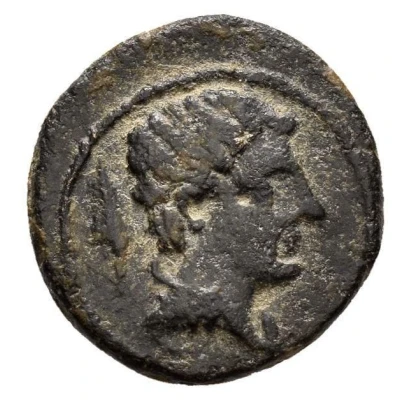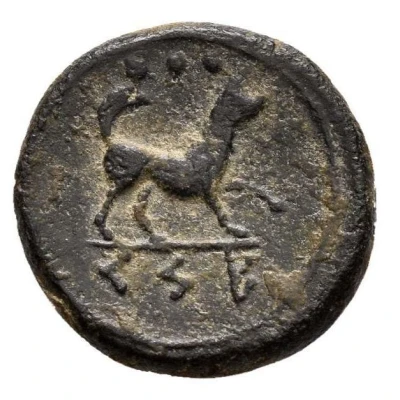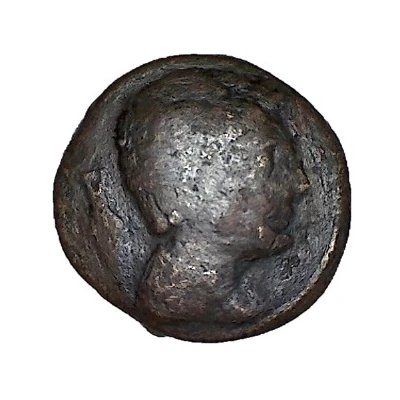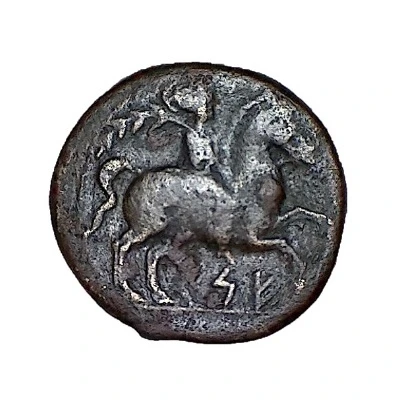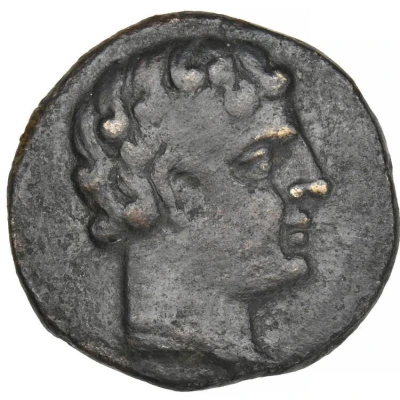
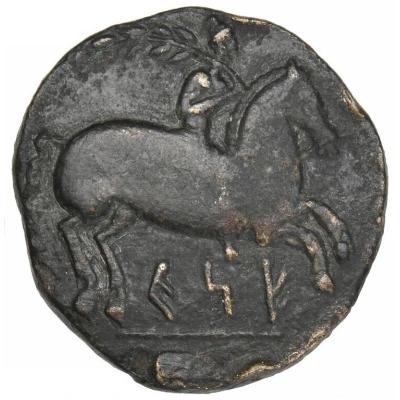

© Fritz Rudolf Künker GmbH & Co. KG, Osnabrück and Lübke & Wiedemann KG, Leonberg
Unit 195 BC - 170 BC
| Bronze | 13 g | 27 mm |
| Issuer | Cessetani people |
|---|---|
| Type | Standard circulation coin |
| Years | 195 BC - 170 BC |
| Value | 1 Unit |
| Currency | Unit (first half of the 2nd century BC) |
| Composition | Bronze |
| Weight | 13 g |
| Diameter | 27 mm |
| Shape | Round (irregular) |
| Technique | Hammered |
| Demonetized | Yes |
| Updated | 2024-10-10 |
| Numista | N#303068 |
|---|---|
| Rarity index | 94% |
Reverse
Horseman riding right, holding palm branch.
Script: Iberian (Levantine)
Comment
Type: Rider with palmReverse inscription:
"KSE" written from left to right in northeastern Iberian script.
55 pieces known according to 1116, page 198.
Interesting fact
The Cessetani people were a tribe that lived in the area that is now modern-day Spain, and their coinage was characterized by its unique designs and inscriptions. One interesting fact about the Standard circulation coin Unit from the Cessetani people is that it features an image of a warrior on horseback, which is a rare depiction in ancient coinage. This suggests that the Cessetani people placed a high value on military strength and power. Additionally, the coin's bronze composition and 13g weight indicate that it was a widely circulating coin that was used for everyday transactions.
